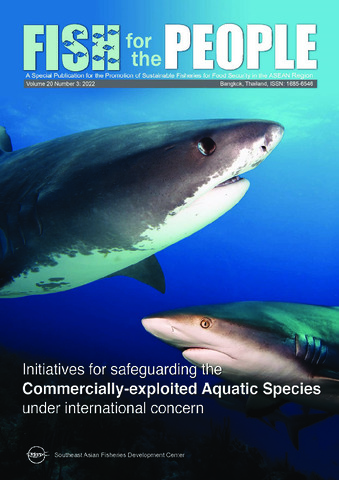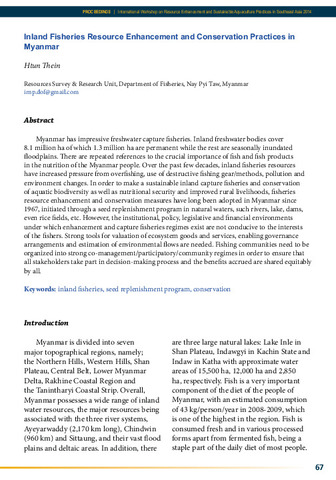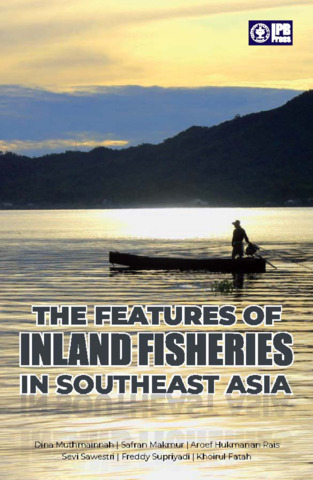Managing fisheries conflicts through communication planning: Experience from inland fisheries of Bangladesh
Share
Abstract
Increasing population, ineffective management, competition among fishing gears over access to resources and proliferation of destructive practices are imposing severe stress on the inland water bodies of Bangladesh. These factors also contribute to the increasing incidence of conflicts among fishery stakeholders. When unabated, these conflicts are potential threats to the livelihoods of millions of the poorest fishing communities that depend on these resources. Effective communication between conflicting parties is perceived as a key for establishing successful negotiations for managing conflicts. On this premise, this paper presents and assesses a Fisheries Conflicts Communication Framework, henceforth called FishCom, a tool for developing plans and strategies for managing fisheries conflicts in the inland fisheries of Bangladesh. This tool embodies a structured participatory process intended for use by policy-makers and conflict management practitioners. They have important roles in catalyzing and effecting changes that are instrumental in minimizing, if not totally eliminating conflicts. Experiences from applying FishCom in the inland fisheries study sites in Bangladesh show that it has enabled a systematic stakeholder-inclusive identification and evaluation of fisheries conflicts and planning of communication interventions to manage them.
Suggested Citation
Murshed-e-Jahan, K., Salayo, N. D., & Kanagaratnam, U. (2009). Managing fisheries conflicts through communication planning: Experience from inland fisheries of Bangladesh. Fisheries Research , 99(2), 112-122. https://doi.org/10.1016/j.fishres.2009.04.009
Subject
Collections
- AQD Journal Articles [1248]
Related items
Showing items related by title, author, creator and subject.
-
Fish for the People Vol.20 No.3
Southeast Asian Fisheries Development Center (Secretariat, Southeast Asian Fisheries Development Center, 2023-02)Aquatic species are exploited for food security and livelihood but some of them could be fully exploited or overexploited if not properly managed. The ASEAN Member States (AMSs), i.e. Indonesia, Philippines, Thailand, and ... -
Inland fisheries resource enhancement and conservation practices in Myanmar
Thein, Htun (Aquaculture Department, Southeast Asian Fisheries Development Center, 2015)Myanmar has impressive freshwater capture fisheries. Inland freshwater bodies cover 8.1 million ha of which 1.3 million ha are permanent while the rest are seasonally inundated floodplains. There are repeated references ... -
The features of inland fisheries in Southeast Asia
Muthmainnah, Dina; Makmur, Safran; Rais, Aroef Hukmanan; Sawestri, Sevi; Supriyadi, Freddy; Fatah, Khoirul (Inland Fishery Resources Development and Management Department, Southeast Asian Fisheries Development Center, 2019)Numerous bodies of inland waters are widely spread in Southeast Asia where fisheries production is an important source of people's animal protein. The capture fisheries sector, utilizing the inland waters, provides employment ...





